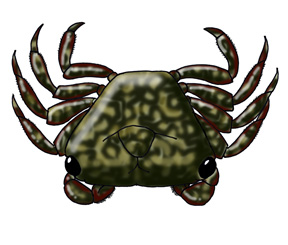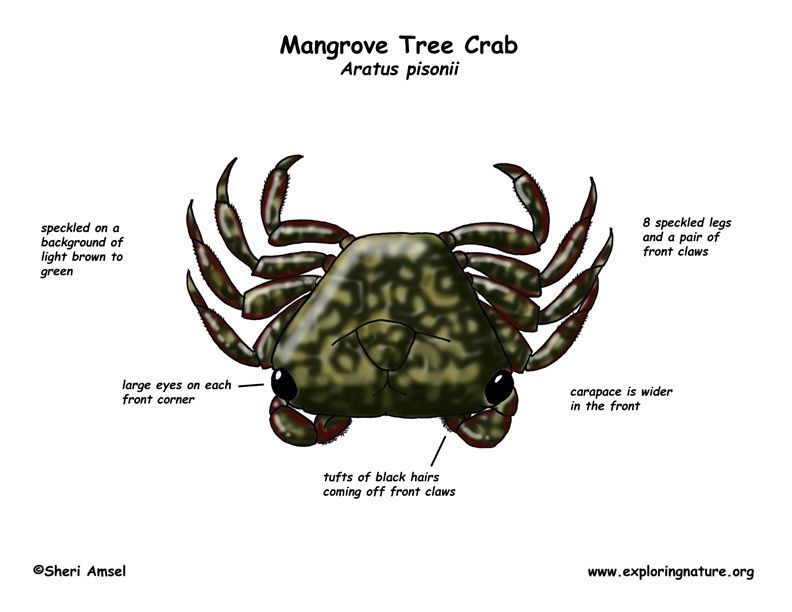

They are found from Florida down through Mexico, Central America and into Northern South America (Venezuela and Brazil). They are also found on the Caribbean islands that have mangrove swamps.
They live in the mangroves scrambling up higher in the vegetation during high tide, then coming down to scavenge for food in the sand during low tide.
Their body (carapace) is speckled on a background of light brown to green and reaches at most an inch long. It is wider in the front with large eyes on each front corner giving the crab a good field of vision but an odd wide-eyed look. They have 8 speckled legs and a pair of front claws with tufts of black hairs coming off them.
They can climb trees and mangroves.
They eat insects and whatever organic matter they can scavenge.
After mating and the fertilization their many eggs, the females hold them on her abdomen until they hatch. Then she climbs down into the water and releases the free-swimming larvae into the water. Only a tiny fraction of them survive to adulthood. She does this many times a year, releasing thousands of larvae.
Kingdom: Animalia
Phylum: Arthropoda
Subphylum: Crustacea
Class: Malacostraca
Order: Decapoda
Infraorder: Brachyura
Family: Sesarmidae
Genus: Aratus
Species: pisonii
When you research information you must cite the reference. Citing for websites is different from citing from books, magazines and periodicals. The style of citing shown here is from the MLA Style Citations (Modern Language Association).
When citing a WEBSITE the general format is as follows.
Author Last Name, First Name(s). "Title: Subtitle of Part of Web Page, if appropriate." Title: Subtitle: Section of Page if appropriate. Sponsoring/Publishing Agency, If Given. Additional significant descriptive information. Date of Electronic Publication or other Date, such as Last Updated. Day Month Year of access < URL >.
Amsel, Sheri. "Crab (Mangrove Tree)" Exploring Nature Educational Resource ©2005-2024. December 13, 2024
< http://exploringnature.org/db/view/Crab-Mangrove-Tree >

